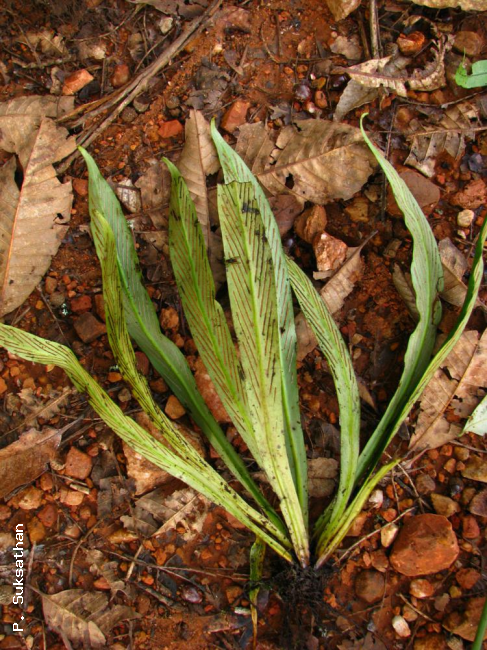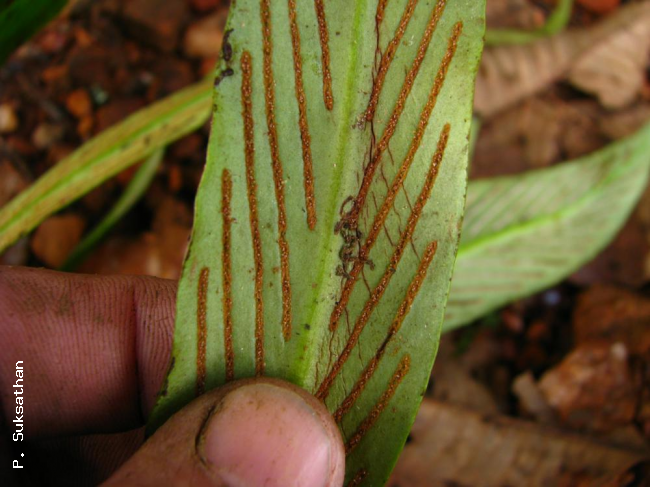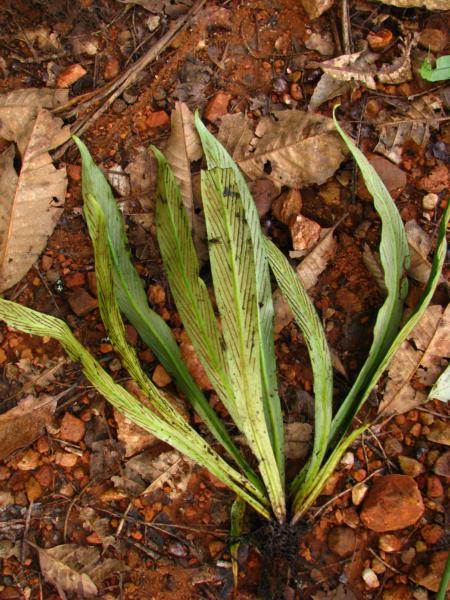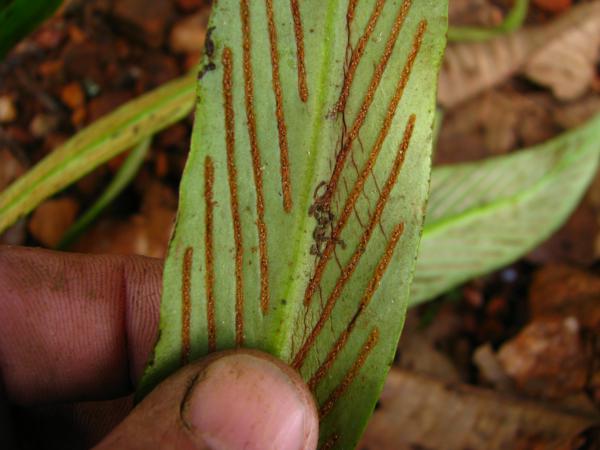
Loxogramme involuta (D.Don) C.Presl
Family
Polypodiaceae
Nomenclature
Loxogramme involuta (D.Don) C.Presl, Tent. Pterid.: 215. 1836; Bedd., Handb. Ferns Brit. India: 393, f. 228. 1883; Tardieu & C.Chr., Fl. Indo-Chine 7(2): 464. 1941; Tagawa & K.Iwats., SouthE. Asian Stud. 5: 56. 1967; Tagawa & K.Iwats., Fl. Thailand 3: 577. 1989; Boonkerd & Pollawatn, Pterid. Thailand: 278. 2000. – Grammitis involuta D.Don, Prodr. Fl. Nepal.: 14. 1825.
Description
Rhizome short, ascending to creeping, about 1.5 mm diam., bearing a tuft of fronds near apex, densely covered with scales or dark on older portion; scales subdeltoid with acuminate apex, up to 7 by 4 mm, thin but stiff, entire, greyish brown, clathrate. Stipes indistinct, or very short with wings. Laminae caudately long-acuminate at apex, attenuate at base and decurrent to narrow wings of stipes nearly to the base, lanceolate, up to 35 by 4 cm, deep green on upper surface, paler beneath; midrib more or less raised beneath, usually flat on upper surface, stramineous or pale green; veins all obscure, anastomosing with free included veinlets; thick and fleshy, glabrous on both surfaces. Sori linear, to form angles of about 80° to midribs, continuous from near margin to near midrib, up to 3 cm long, about 1.5 mm broad, superficial .
Distribution in Thailand
NORTHERN: Chiang Mai, Tak; NORTH-EASTERN: Loei; EASTERN: Nakhon Ratchasima.
Distribution in Laos
Champasak.
Wider Distribution
India, Upper Burma and Indochina.
Ecology
On mossy rocks or on mossy tree trunks in dense evergreen forests at 900–1800 m alt.
Proposed IUCN Conservation Assessment
Least Concern (LC). This species is widespread and not under any known threat.
Voucher specimens - Thailand
Middleton et al. 4951, Chiang Mai, Doi Pha Ti Do (E).

Whole plant

Lower surface of lamina and sori
Site hosted by the Royal Botanic Garden Edinburgh. Content managed by Stuart Lindsay, Gardens by the Bay, Singapore and David Middleton, Singapore Botanic Gardens. Last updated 24 January 2012

